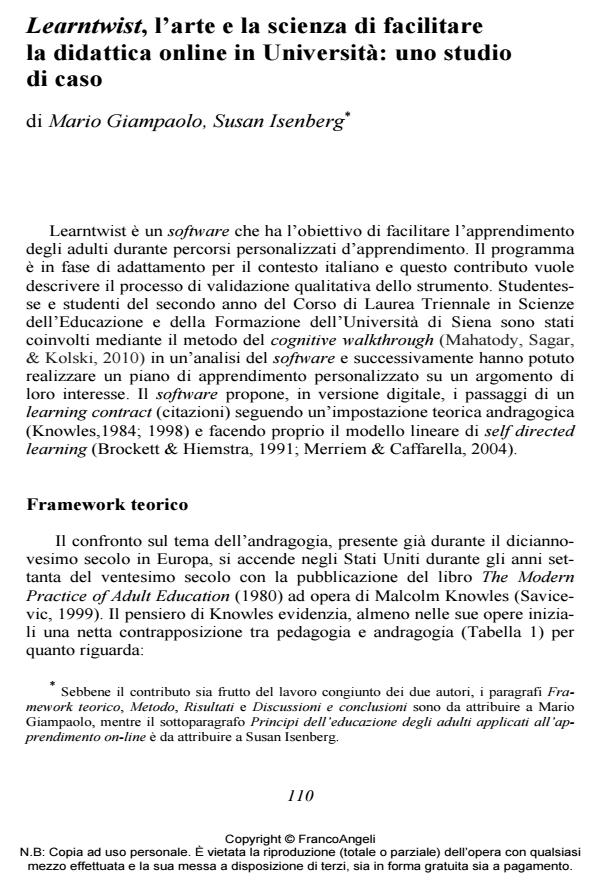Learntwist, l’arte e la scienza di facilitare la didattica online in Università: uno studio di caso
Titolo Rivista EDUCATIONAL REFLECTIVE PRACTICES
Autori/Curatori Mario Giampaolo, Susan Isenberg
Anno di pubblicazione 2017 Fascicolo 2017/1
Lingua Italiano Numero pagine 26 P. 110-135 Dimensione file 324 KB
DOI 10.3280/ERP2017-001008
Il DOI è il codice a barre della proprietà intellettuale: per saperne di più
clicca qui
Qui sotto puoi vedere in anteprima la prima pagina di questo articolo.
Se questo articolo ti interessa, lo puoi acquistare (e scaricare in formato pdf) seguendo le facili indicazioni per acquistare il download credit. Acquista Download Credits per scaricare questo Articolo in formato PDF

FrancoAngeli è membro della Publishers International Linking Association, Inc (PILA)associazione indipendente e non profit per facilitare (attraverso i servizi tecnologici implementati da CrossRef.org) l’accesso degli studiosi ai contenuti digitali nelle pubblicazioni professionali e scientifiche
Learntwist is a web-based software that aims to facilitate learning in adults. Developed by Susan Isenberg, the software is an electronic version of an apprenticeship contract. The article introduces the framework of andragogy and self-directed learning, presents the methodology of learning contracts, focuses on the principles of adult education applied to internet learning and describes a research conducted at the University of Siena. The research illustrates how students validated and used the Italian version of Learntwist. Participants have been engaged in a cognitive walkthrough to assess the usability of the software and in the planning of a personalized learning plan. Students evaluated that the learning experience can be improved by working on the different steps, the customization and the graphic interface of the software. The activities planned by the students are characterized by arguments and subjects related to students’ passions and interests, strategies based on research, collaboration with experts, learning evidence and methods of assessment. Limits of the experience and hypothesis for further researches are also discussed.
Mario Giampaolo, Susan Isenberg, Learntwist, l’arte e la scienza di facilitare la didattica online in Università: uno studio di caso in "EDUCATIONAL REFLECTIVE PRACTICES" 1/2017, pp 110-135, DOI: 10.3280/ERP2017-001008